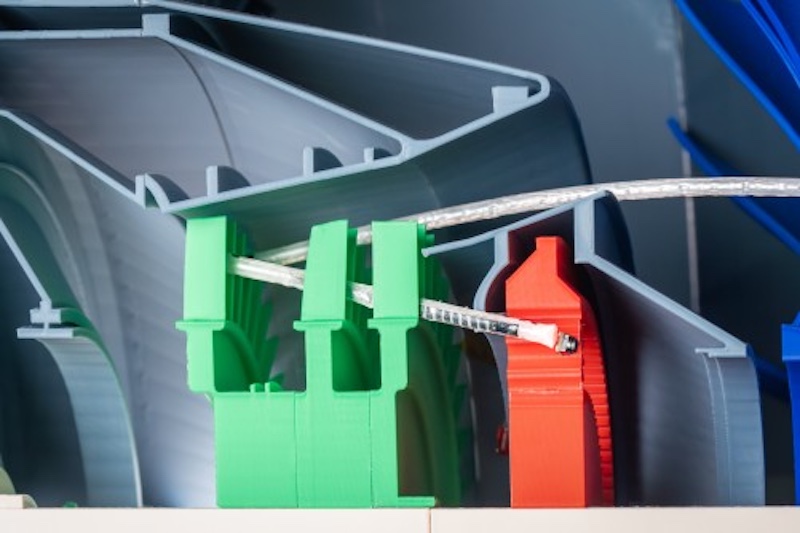UC San Diego researchers have developed a soft robotic skin that enables vine robots that are just a few millimeters wide to navigate convoluted paths and fragile environments.
To accomplish this, the researchers integrated a very thin layer of actuators made of liquid crystal elastomer at strategic locations in the soft skin. The robot is steered by controlling the pressure inside its body and temperature of the actuators.
The researchers showed that a robot equipped with this skin could successfully navigate a model of the arteries in a human body. The robot also was able to navigate a model of the interior of a jet engine.
The research team published their results in the October 15 issue of the journal Science Advances.
“Our work represents a step toward small, steerable, soft vine robots for applications in delicate and constrained environments,” said Tania K. Morimoto, an associate professor in the Department of Mechanical and Aerospace Engineering at the University of California San Diego, and the paper’s corresponding author.
Currently, steerable vine robots exist at larger scales, on the order of centimeters to meters. These robots tend to be steered either by pneumatic actuators, motors, or tendons. But these steering methods are difficult to implement or don’t perform well at smaller scales.
Researchers overcame these size limitations by integrating a series of actuators made of liquid crystal elastomer at specific locations in a soft, robotic skin.
These actuators are very thin but still very strong, which makes them suitable for steering robots at a small scale. The robot can be controlled either by temperature, or pressure, or both. The latter is better, the research team found.
“They embedded small, flexible heaters under the actuators to control the actuator’s temperature and built a system to precisely adjust the pressure inside the robot for steering.”
Researchers tested the skin on a flexible, vine robot of 3 to 7 millimeters – about 0.2 inches – in diameter and 25 centimeters – roughly 10 inches – in length. These robots grow from the tip by turning their skin inside out.
The study showed that the robot could make several turns of more than 100 degrees along its body length when the actuators were activated. The robot also could squeeze through narrow gaps, including some that were half of its diameter.
For example, researchers successfully threaded a soft vine robot through a model of a human aorta and a connecting artery. They also equipped the robot with a camera to inspect various targets inside of a convoluted jet engine model.
“The soft skin developed in this work could further be adapted for other various soft robotic systems, such as wearable haptic devices, soft grippers and locomotive soft robots,” said Sukjun Kim, a postdoctoral researcher in Morimoto’s lab.
Next steps also include allowing the robot to be remote controlled or autonomous, and making it even smaller.
This work was supported in part by the National Institutes of Health under R01 EB032417 and in part by the Arnold and Mabel Beckman Foundation.


